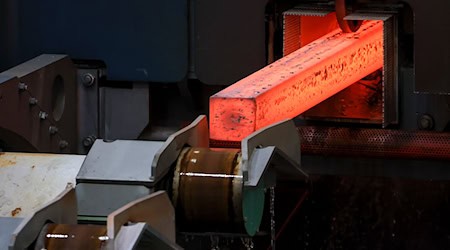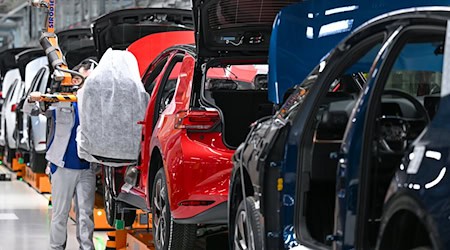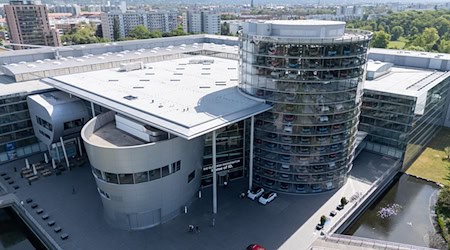Small electronic components are lined up on a pallet, which a gripper arm grabs unerringly. Slowly at first, it picks up speed after the first pass. First, the robot dips the contact points into a flux, then, with the help of sensors, into tin heated to 400 degrees with millimeter precision. Finally, the coils are neatly placed in a box. Once in motion, it only needs around 30 seconds per electronic part.
The family-run company Arnold Electronic in Lichtenau near Chemnitz employs 43 people. It manufactures coils, transformers and chokes in various formats: from the size of a fingernail to transformers weighing 100 kilograms. The tinning robot, affectionately known as "Robby", has been part of the team for around one and a half years. It was developed in collaboration with the Chemnitz Institute of Mechanical and Plant Engineering (ICM). "It took around five years from the idea to implementation," explains Production Manager Ulrich Morawietz. In total, the system cost around 120,000 euros.
Robotics cluster pushes automation in small companies
While the use of robots has long been commonplace in large industrial companies with series production, such automation is often a major hurdle for small companies. Not only because of the investments that have to be made. It often involves the production of small quantities with great complexity, explains ICM boss Sebastian Ortmann.
"But there is a high demand for this in Saxony," says the expert. His institute supports companies such as Arnold Electronic and has a real laboratory where various approaches can be tested. "The main aim is to maintain and increase value creation in the manufacturing industry in Saxony." Robotics could also help companies to counter the shortage of skilled workers - especially with regard to monotonous work, for which it is often difficult to find employees.
In order to promote such automation, "Robotics Saxony", a special network of research and companies in Saxony, has been in existence since this year. In addition to the ICM, it is managed by the "Robot Valley" innovation center in Dresden and the Saxon mechanical engineering association Vemas. According to Ortmann, around 350 companies belong to it.
How can AI help small companies?
In addition to automation by robots, the use of artificial intelligence (AI) in companies is also set to increase in the future. Ortmann observes that employees often have fewer reservations about this than about robots. This is because they are usually already familiar with AI from private applications such as ChatGPT. AI can help to simplify monotonous administrative processes, explains the scientist. For example, the creation of test protocols and documentation, but it could also provide preliminary work for offers.
The latest applications for robotics and AI for SMEs were to be presented at a so-called project workshop in Chemnitz this Thursday. In addition to the tinning robot in Lichtenau, the workshop will also focus on solutions for the skilled trades, the use of robots in wood processing and artificial intelligence for detecting errors in production.
Even though Arnold Electronic in Lichtenau relies on robotics, many production steps remain closely tied to manual work. For example, some electronic parts are still tinned by hand - especially when it comes to very small quantities and custom-made products. After all, according to Morawietz, 5,000 to 6,000 different types of coils are produced here every year. The copper wires are also still wound semi-automatically on special machines without the help of robots, but in the care of experienced employees.
Copyright 2025, dpa (www.dpa.de). All rights reserved










